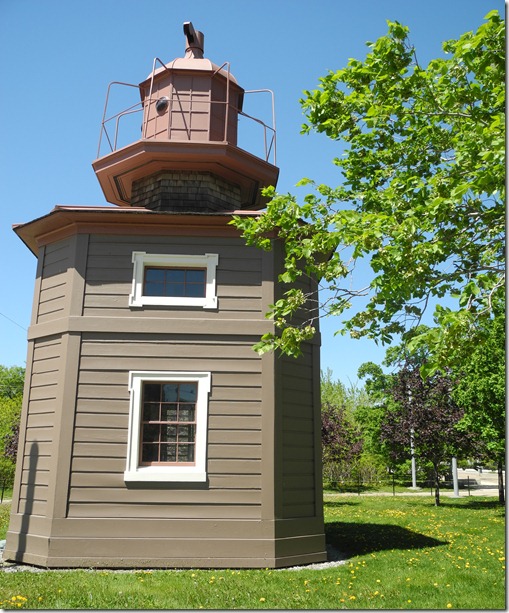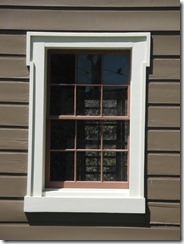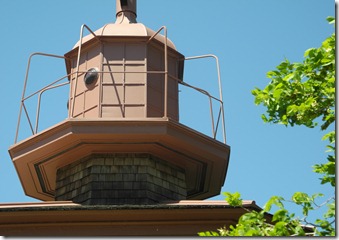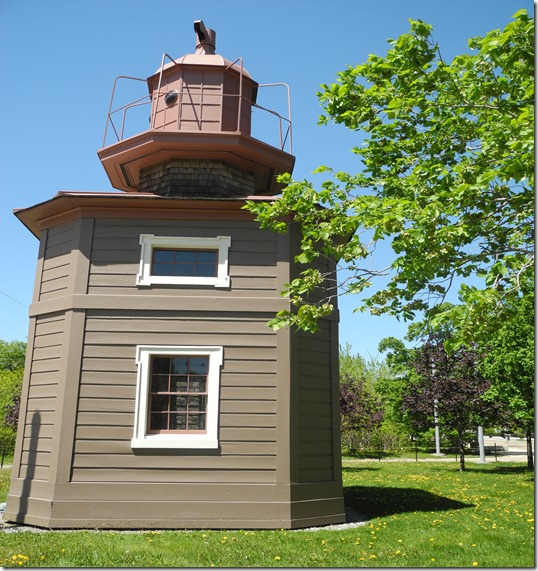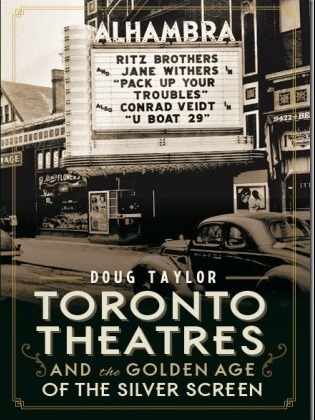A small lighthouse located at the foot of Bathurst Street, is in a small grassy park hemmed in by the busy lanes of traffic on Fleet Street and the Lakeshore Boulevard. It seems strangely out of place, as it is situated a considerable distance from the water’s edge. However, it was once played an important role in the life of Toronto’s harbour. The “Queen’s Wharf Lighthouse,” for over fifty years, guided ships into Toronto Harbour.
In 1834, when the town of York was incorporated and renamed Toronto, although the harbour was busy during the shipping season, facilities for exporting and importing goods remained quite primitive. Visitors that disembarked at the western end of the harbour were forced to step directly on to a muddy shoreline as there was no wharf. There was a wharf at the eastern end, and though more convenient for passengers, it was a hardship to unload supplies destined for Fort York from this wharf. As a result, in 1837, the British Parliament in London granted funds for a wharf to be constructed closer to the fort, near the foot of Bathurst Street.
The new wharf was originally referred to simply as the Government Wharf, or the King’s Wharf. However, Queen Victoria ascended the throne the year the construction on wharf ended, so it became the Queen’s Wharf. During those years, there was no passageway to enter the harbour at its eastern end (today’s eastern gap did not exist), so the western entrance was the sole channel for ships entering or departing the harbour. The year after the wharf was completed, a small lighthouse was built on it to guide ships into port. This was deemed necessary since the entrance was shallow and treacherous, especially when there was fog or a brisk western wind.
This sketch depicts the Queen’s Wharf in 1838. The view looks east toward the small city of Toronto, nestled along the shore of the harbour. The wharf extended about 130 to 150 feet into the harbour. The small lighthouse originally built on the wharf is visible. Sketch is from John Ross Robertson’s book, “Landmarks of Toronto, Volume I,” published in 1894.
A close-up view of the 1838 lighthouse.
As shipping had increased, in 1851 an additional 70 feet was added to the wharf. The new portion extended to the west, rather than further out into the lake. This assisted in controlling the sand that was continually clogging the harbour entrance.
In 1861, they built a new lighthouse—the “Queen’s Wharf Lighthouse”—designed by Kivas Tully, who also created the plans for the lighthouse keeper’s cottage. The new lighthouse was located on the west side of the wharf that pointed southward. Then, they constructed a smaller lighthouse on the arm that extended westward. The first lighthouse was painted white, and the second (the smaller one) was painted red. The latter lighthouse is the structure that resides today on Fleet Street, a short distance to the west of Bathurst.
The lighthouses are visible in this photo, taken in 1907. The red lighthouse is situated behind the white lighthouse. They remained in service until 1911, when work was completed on relocating the harbour entrance 1300 feet to the south, which enlarged the entrance for shipping. The lighthouses were now high and dry and considered obsolete. In 1929, the smaller, red lighthouse was donated to the Harbour Commission, who decided to preserve it as a heritage site. Employing wooden rollers and horses, it was moved to its present site on Fleet Street . Today, it is the responsibility of Heritage Toronto. City of Toronto Archives, F. 1244, It.0187 (1)
This photo was taken in 1925, when the red lighthouse was no longer in service but remained on its original site. The lighthouse keeper’s house is in the foreground. City of Toronto Archives, Series 393, s. 393, It.19984.
The red lighthouse on November 26, 1929, after it was relocated to Fleet Street. At the far right-hand side of the photo, a small portion of Maple Leaf Stadium is visible. City of Toronto Archives, Fl.1266, It. 18723(1)
The lighthouse in 2013, after being relocated to its present position in 1929.
Details on the lighthouse in May of 2013.
To view the Home Page for this blog: https://tayloronhistory.com/
To view previous blogs about movie houses of Toronto—historic and modern
Recent publication entitled “Toronto’s Theatres and the Golden Age of the Silver Screen,” by the author of this blog. The publication explores 50 of Toronto’s old theatres and contains over 80 archival photographs of the facades, marquees and interiors of the theatres. It relates anecdotes and stories of the author and others who experienced these grand old movie houses.
To place an order for this book:
Book also available in Chapter/Indigo, the Bell Lightbox Book Store and by phoning University of Toronto Press, Distribution: 416-667-7791
Theatres Included in the Book:
Chapter One – The Early Years—Nickelodeons and the First Theatres in Toronto
Theatorium (Red Mill) Theatre—Toronto’s First Movie Experience and First Permanent Movie Theatre, Auditorium (Avenue, PIckford), Colonial Theatre (the Bay), the Photodrome, Revue Theatre, Picture Palace (Royal George), Big Nickel (National, Rio), Madison Theatre (Midtown, Capri, Eden, Bloor Cinema, Bloor Street Hot Docs), Theatre Without a Name (Pastime, Prince Edward, Fox)
Chapter Two – The Great Movie Palaces – The End of the Nickelodeons
Loew’s Yonge Street (Elgin/Winter Garden), Shea’s Hippodrome, The Allen (Tivoli), Pantages (Imperial, Imperial Six, Ed Mirvish), Loew’s Uptown
Chapter Three – Smaller Theatres in the pre-1920s and 1920s
Oakwood, Broadway, Carlton on Parliament Street, Victory on Yonge Street (Embassy, Astor, Showcase, Federal, New Yorker, Panasonic), Allan’s Danforth (Century, Titania, Music Hall), Parkdale, Alhambra (Baronet, Eve), St. Clair, Standard (Strand, Victory, Golden Harvest), Palace, Bedford (Park), Hudson (Mount Pleasant), Belsize (Crest, Regent), Runnymede
Chapter Four – Theatres During the 1930s, the Great Depression
Grant ,Hollywood, Oriole (Cinema, International Cinema), Eglinton, Casino, Radio City, Paramount, Scarboro, Paradise (Eve’s Paradise), State (Bloordale), Colony, Bellevue (Lux, Elektra, Lido), Kingsway, Pylon (Royal, Golden Princess), Metro
Chapter Five – Theatres in the 1940s – The Second World War and the Post-War Years
University, Odeon Fairlawn, Vaughan, Odeon Danforth, Glendale, Odeon Hyland, Nortown, Willow, Downtown, Odeon Carlton, Donlands, Biltmore, Odeon Humber, Town Cinema
Chapter Six – The 1950s Theatres
Savoy (Coronet), Westwood
Chapter Seven – Cineplex and Multi-screen Complexes
Cineplex Eaton Centre, Cineplex Odeon Varsity, Scotiabank Cineplex, Dundas Square Cineplex, The Bell Lightbox (TIFF)
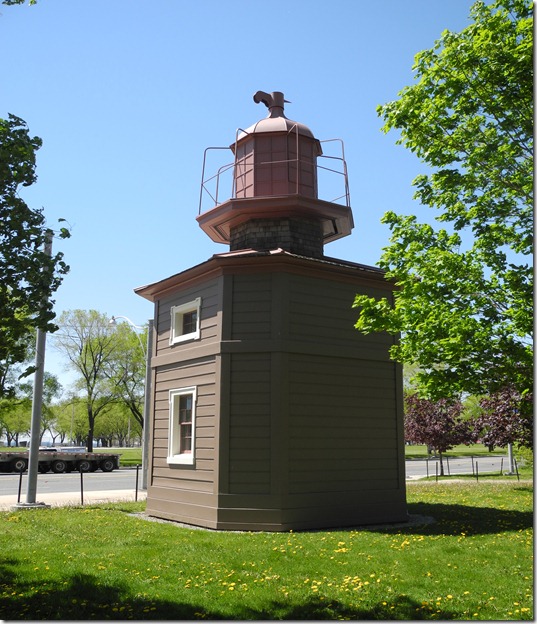
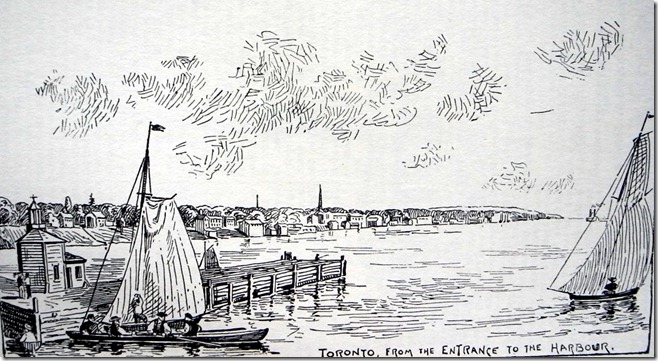
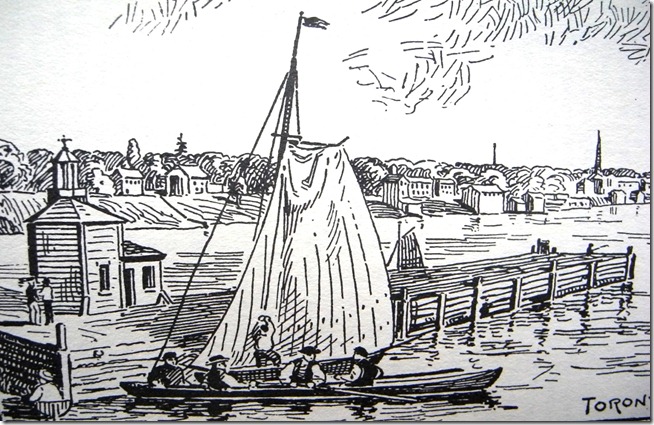
![1907 --f1244_it0187[1] 1907 --f1244_it0187[1]](https://tayloronhistory.com/wp-content/uploads/2015/04/1907-f1244_it01871_thumb.jpg)


